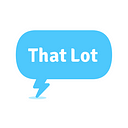In 2016 more than 6 billion stickers and emojis were exchanged every single day. Snapchat was responsible for 10% of those 6 billion shares. Facebook and Twitter achieved 5% each while Instagram, relatively new to the sticker space had a 2% share.
This means that 22% of sticker sharing is happening on social. As social platforms slowly morph into messaging platforms, the use of stickers on social is set to significantly increase.
Just as brands started experimenting with the use of emojis in their social messaging previously, now is the time to try the tiny trend of stickers in your social strategy. Before emojis became commonplace in commercial messaging, they provided a lot of cut-through for the brands who were brave enough to try them. Stickers may provide a similar opportunity.
Ideas for how brands can use stickers:
- Ask your audience to guess what’s underneath the sticker. This is a nice way to incorporate platform-specific aesthetics.
- Use stickers to provide context instead of relying on copy in the post. Instagram and Snapchat’s Geostickers are a great way to share your location.
- Work with social platforms to develop unique stickers for campaigns.
Evolution of Stickers
We’re already seeing the evolution of stickers with Snapchat and Instagram’s ability to ‘pin’ stickers to a moving object in a video, creating fun animated effects.
Timeline of Stickers
Stickers first debuted in Japan in 2011. If this sounds familiar, it’s because it’s a very similar origin story to emojis which were first invented for use on Japanese mobile phones in the late 1990s. Stickers are essentially an evolution of emoji, allowing more expression and personalised reactions with room for endless variations. Emojis are tightly controlled by the Unicode Consortium but stickers can be created by anyone, with platforms like Twitter and Messenger collaborating with brands for special sets of stickers for campaigns.
- Snapchat introduced stickers in March 2016.
- Twitter introduced stickers in June 2016.
- Instagram Stories added stickers in December 2016.
Snapchat kicked off the tiny trend of stickers in social with a cute library of characters that could be added, resized and layered up to add extra context to snaps. In the same month of launching stickers, they purchased Bitmoji, allowing for user’s personalised bitmoji character to appear in stickers posed in a facepalm, eating dinner or with messages like ‘happy birthday’ or ‘hey boo’.
Twitter introduced stickers to their photo app in June 2016.
A few months later and Instagram Stories added stickers in December 2016.
There is no escaping that the visual language of emojis and stickers are here to stay. People are using stickers to express themselves, the question is, will they be using yours?
For more social insights and a whole lot of fun visit That Lot’s Twitter feed.
